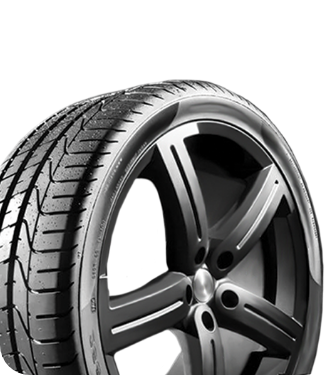

Tire Safety Checklist To Complete Before Road Trips
Tires |Planning a road trip can be an exciting adventure, but ensuring your vehicle’s safety, especially your tires, should always be a top priority. There are many components of the car that drivers should care for and worry about during a road trip, but the tires are crucial.
Flat tires and blowouts are all too common on road trips, and drivers must be proactive in maintenance and preparation to avoid these dangers and prepare for if these accidents occur. Below, we’ve compiled a tire safety checklist for drivers to complete before road trips and offer some tips for a fun and safe drive.
The Importance of Tire Safety for Road Trips
Tire safety is essential for any road trip. Proper maintenance not only improves vehicle performance but also reduces accident risks.
Too often, the cause of highway accidents and collisions comes from faulty tires that cause drivers to lose control at high speeds. By prioritizing tire safety, you can ensure a smoother ride and peace of mind during your travels, learning to inspect, maintain, and prepare your tires for a safe and enjoyable adventure on the open road.
Understanding Tire Basics
To better prepare your vehicle and ensure tire safety, drivers must familiarize themselves with the basics of their car’s tires.
Importance of Tires in Vehicle Safety
Tires play a pivotal role in vehicle safety. They provide the necessary traction for acceleration, braking, and steering. Poor tire condition can lead to reduced handling capabilities, longer stopping distances, and increased risk of blowouts. Ensuring your tires are in top shape is the first step toward a safe road trip.
Types of Tires
Selecting the right type of tire for your vehicle and trip conditions is crucial. All-season tires offer versatility for various weather conditions but may not perform optimally in extreme weather.
Winter tires provide superior traction in snow and ice, making them essential for winter trips. Performance tires are for high-speed handling and cornering, ideal for sporty drives. Choosing the appropriate tires based on your road trip conditions can enhance your vehicle’s performance and safety.
Pre-Trip Tire Inspection

Visual Inspection
Before hitting the road, it’s crucial to conduct a thorough visual inspection of your tires to ensure a safe journey. Start by looking for any visible damage, such as cracks, bulges, or punctures, which can indicate underlying issues. Check the tread depth as well; inadequate tread can greatly affect traction, especially in wet conditions.
If you notice any abnormalities during your inspection, it’s best to replace the affected tires before your trip to avoid potential hazards and ensure a smooth driving experience. Taking these extra moments for tire care can save you from unexpected troubles and enhance your overall road safety.
Tread Depth Assessment
Tread depth is critical for maintaining traction on the road. Worn-out treads can lead to reduced grip, especially in wet conditions.
The penny test is a useful tread depth check in a pinch, but for a more accurate and reliable assessment, consider a tread depth gauge. Maintaining adequate tread depth ensures better handling and shorter braking distances.
Tire Pressure Check
Tires require proper inflation for optimal performance and safety. Underinflated tires can lead to poor fuel efficiency, while overinflated tires can cause uneven wear.
Use a tire pressure gauge to check the pressure of each tire, including the spare. Refer to your vehicle’s manual for the recommended PSI (pounds per square inch) for your specific vehicle type. Check your tire pressure before embarking, and when stopping for gas or other breaks, dutifully check the tire pressure to ensure their safety.
Understanding Tire Maintenance
Rotation and Alignment
Before your road trip, it’s wise to rotate and align your vehicle’s tires. Regular tire rotation and alignment checks are vital for even wear and prolonged tire life. Rotating your tires every 5,000 to 7,000 miles ensures that all tires wear evenly, improving their longevity.
Proper alignment prevents uneven wear and enhances vehicle handling. Misaligned wheels can cause your vehicle to pull to one side, leading to unsafe driving conditions.
Balancing Tires
Another useful tire maintenance service is tire balancing. Unbalanced tires can cause vibrations, leading to uneven wear and reduced handling.
Balancing adjusts the weight distribution of the tires and wheels, ensuring a smooth and comfortable ride. Regularly balancing your tires can enhance performance and prevent premature wear, contributing to a safer road trip.
Emergency Preparedness
The last part of our tire safety checklist that drivers should complete before road trips is emergency preparedness. Even with adequate preparation, accidents and emergencies can still happen. It’s up to you, as the driver, to ensure you’re prepared when faced with a tire emergency.

Making a Tire Emergency Kit
When going on a long-distance road trip, every driver should pack a tire emergency kit with critical tools such as:
- Jack
- Spare tire
- Lug wrench
- Tire repair kit
- Portable air compressor
- Tire sealant
Knowing how to change a tire can save you from being stranded on the road, and having a well-equipped emergency kit ensures you’re ready for unexpected situations until you reach a service station.
Know Your Resources
Familiarizing yourself with your emergency resources is an essential step for any road trip. One of the most crucial components of roadside preparedness is knowing the details of your roadside assistance plan, which many auto insurance policies provide. This service can offer invaluable help whether you experience a flat tire, run out of fuel, or encounter mechanical issues.
Review your policy beforehand, including the specific coverage it offers, such as towing distances, service response times, and any associated costs. In addition to roadside assistance, keep the contact numbers of local towing companies and service centers handy, just in case.
Best Practices During the Trip
Once you’re out on the road and on your way, there are some tire maintenance best practices to follow to ensure you reach your destination safely.
Regular Checks During Long Drives
During long drives, it’s essential to perform regular checks on your tires. Set reminders to inspect tire pressure and condition at rest stops or gas stations.
Proactively monitoring your tires can help identify issues early and prevent potential problems. Keeping an eye on your tires throughout the trip ensures consistent performance and safety.
Handling Different Conditions
Different road conditions require specific driving techniques. In rainy weather, reduce your speed and maintain a safe following distance to avoid hydroplaning.
For snowy or icy roads, use winter tires and drive cautiously, avoiding sudden accelerations or stops. Off-road adventures demand durable tires with excellent traction. Adjusting your driving style based on road conditions can enhance safety and prevent tire-related incidents.
Get Your Tires Ready for the Long Haul With RNR Tire Express
If you need a tire rotation, alignment, or balancing, or you want to replace your vehicle’s tires before a trip, RNR Tire Express is here to help. We make it easy to find services and tires in Tucson for your car, and our tire experts are there to help you through every step of the way. Schedule an appointment at one of our many tire shops today!





